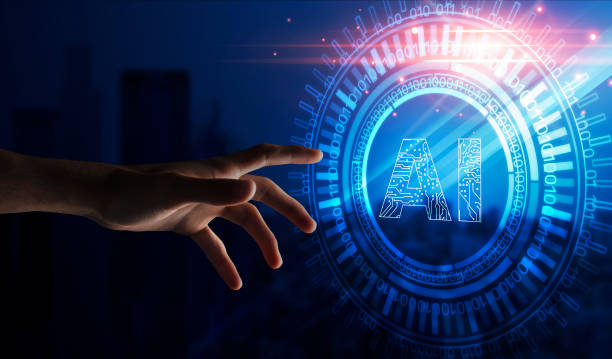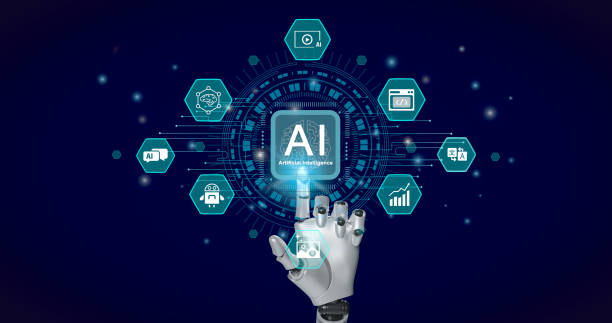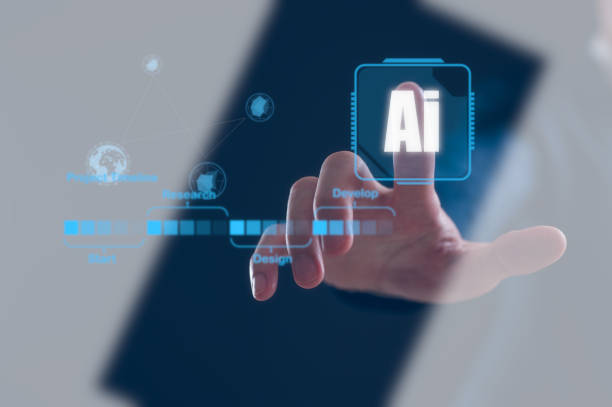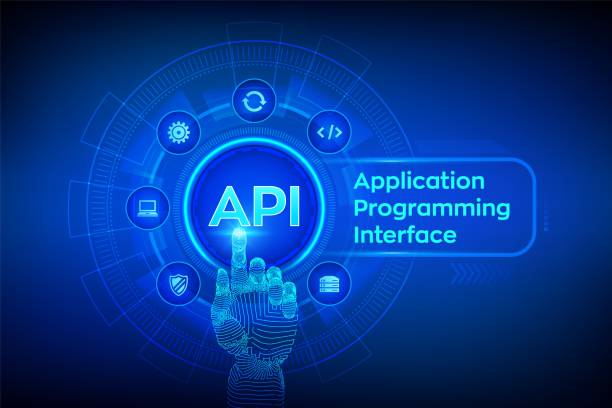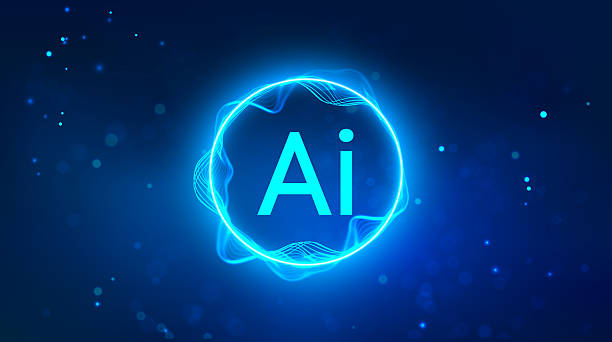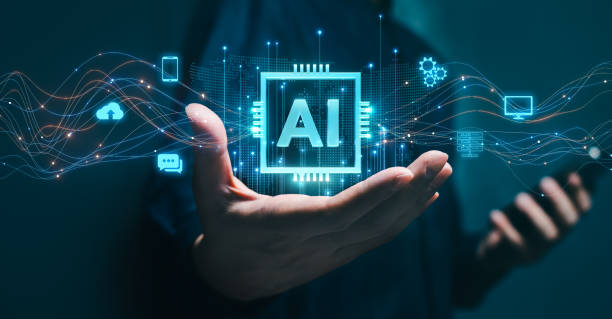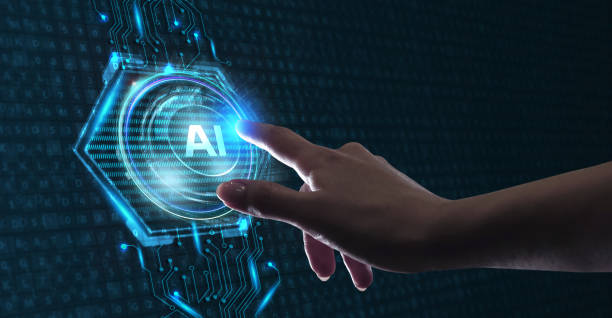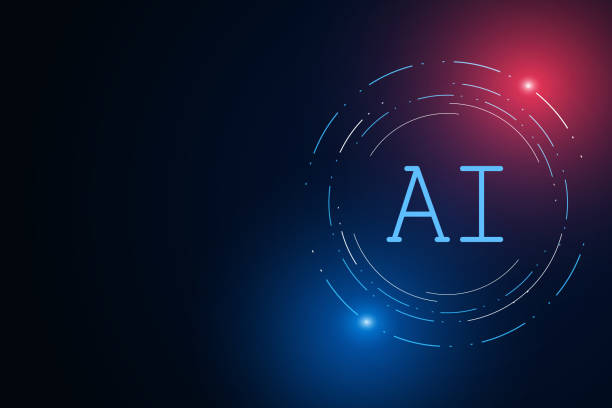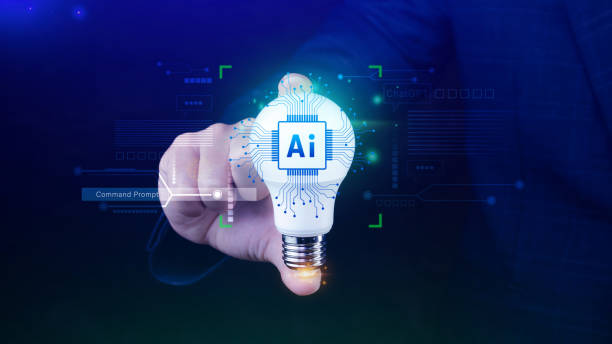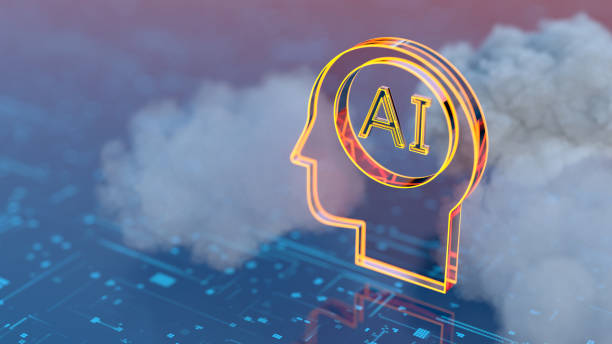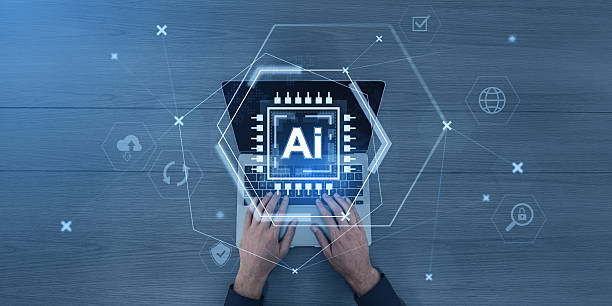What is an Artificial Intelligence Robot? Definition, History, and Key Concepts
#Artificial Intelligence Robot refers to a combination of robotics and artificial intelligence.
These robots are not only capable of performing physical tasks but can also analyze information, make decisions, and automatically interact with their environment using machine learning algorithms and natural language processing.
The history of artificial intelligence robots goes back decades, but recent advances in the field of artificial intelligence have dramatically increased the capabilities of these robots.
Key concepts related to artificial intelligence robots include Machine Learning, Neural Networks, Natural Language Processing, and Computer Vision.
To better understand artificial intelligence robots, it is important to note that the main goal is to build robots that can think, learn, and act like humans.
Robotics plays an important role in the physical structure of the robot, while artificial intelligence is considered its intelligent brain.
Therefore, an artificial intelligence robot is a complex system that requires coordination between hardware and software.
Artificial intelligence robots can be used in various industries such as manufacturing, medicine, customer service, and education.
These robots can perform repetitive and dangerous tasks, increase accuracy and efficiency, and help improve the quality of human life.
In fact, an artificial intelligence robot is not only a tool but also an intelligent collaborator that can help humans solve problems and achieve various goals.
Did you know that 85% of customers check your company’s website before any interaction?
Build a corporate website worthy of your reputation with Rasaweb.
✅ Increase customer credibility and trust
✅ Attract high-quality leads
⚡ Get free website design consultation
Main Components of an Artificial Intelligence Robot: Hardware and Software
An artificial intelligence robot consists of two main parts: hardware and software.
Hardware includes physical components of the robot such as sensors, motors, arms, and processors.
Sensors collect information from the environment, motors provide robot movement, arms enable physical tasks, and processors process information and make decisions.
Software includes artificial intelligence algorithms, control programs, and user interfaces.
Artificial intelligence algorithms are responsible for learning, reasoning, and decision-making.
Control programs control the movement and operation of the robot, and user interfaces allow human interaction with the robot.
For example, an artificial intelligence robot on a factory production line may use vision sensors to detect defective parts, robotic arms to move parts, and machine learning algorithms to improve its performance over time.
Choosing the right hardware and software depends on the type of task the robot must perform.
For example, an artificial intelligence robot that works in dangerous environments must have robust hardware and reliable software.
Also, an artificial intelligence robot should be designed to easily interact with humans and understand their commands.
Therefore, designing an artificial intelligence robot requires knowledge and expertise in various fields such as robotics, artificial intelligence, and software engineering.
Applications of Artificial Intelligence Robots in Various Industries
Artificial intelligence robots have extensive applications in various industries.
In the manufacturing industry, artificial intelligence robots can be used for repetitive, dangerous, and precise tasks.
These robots can increase product quality, reduce costs, and improve worker safety.
In the medical industry, artificial intelligence robots can be used for precise surgeries, disease diagnosis, and remote healthcare delivery.
These robots can increase the accuracy and speed of surgeries, accelerate disease diagnosis, and provide access to healthcare for people in remote areas.
In the customer service industry, artificial intelligence robots can be used to answer customer questions, provide technical support, and solve problems.
These robots can increase customer satisfaction, reduce support costs, and increase service availability.
In addition, artificial intelligence robots have many applications in other areas such as education, agriculture, and transportation.
For example, in education, artificial intelligence robots can be used to provide personalized training, assess student performance, and provide feedback.
| Industry | Application of AI Robot |
|---|---|
| Manufacturing | Performing repetitive and dangerous tasks |
| Medicine | Precise surgery and disease diagnosis |
| Customer Service | Answering questions and providing support |
By using machine learning algorithms, artificial intelligence robots can improve their performance over time and automatically adapt to environmental changes.
Therefore, an artificial intelligence robot is not only an efficient tool but also a smart investment that can help improve productivity and reduce costs in various industries.
Click here to preview your posts with PRO themes ››
Advantages of Using Artificial Intelligence Robots
Using artificial intelligence robots has many advantages.
Increased accuracy and speed in performing tasks, reduced costs, improved safety, and increased productivity are among the most important of these advantages.
Artificial intelligence robots can perform repetitive and tedious tasks without fatigue and with high accuracy, which leads to fewer errors and improved quality of products and services.
Also, artificial intelligence robots can work in dangerous and inaccessible environments for humans, which leads to improved worker safety.
Artificial intelligence robots can work continuously without the need for rest, which leads to increased productivity and reduced costs.
In addition, artificial intelligence robots can improve their performance over time and automatically adapt to environmental changes by using machine learning algorithms.
Overall, an artificial intelligence robot is a powerful tool that can help improve the quality of human life and the advancement of various industries.
Are you tired of losing business opportunities due to not having a professional corporate website?
Rasaweb helps you by designing a professional corporate website:
✅ Build a powerful and reliable image of your brand
✅ Convert website visitors into loyal customers
⚡ Get a free consultation now!
Challenges in the Development and Use of Artificial Intelligence Robots
Despite the many benefits, the development and use of artificial intelligence robots also come with challenges.
High development and implementation costs, ethical and social issues, and security concerns are among these challenges.
Developing an artificial intelligence robot requires a significant investment in research and development, equipment purchase, and human resource training.
Also, the use of artificial intelligence robots can lead to job losses and increased social inequalities.
Ethical issues related to artificial intelligence robots include ethical decision-making, accountability, and privacy.
Security concerns related to artificial intelligence robots include hacking robots, using robots for malicious purposes, and controlling robots by unauthorized individuals.
To overcome these challenges, we need to develop appropriate laws and regulations, train human resources, and pay attention to ethical and social issues.
Also, it should be noted that artificial intelligence robots should not replace humans but should be used as a tool to help humans and improve their quality of life.
Artificial intelligence robots should be designed to easily interact with humans and understand their commands.
The Future of Artificial Intelligence Robots: Predictions and Trends
The future of artificial intelligence robots is very bright and full of opportunities.
It is predicted that in the future, artificial intelligence robots will play a more important role in human life and will be used more widely in various industries.
Recent advances in the field of artificial intelligence, such as Deep Learning and complex neural networks, have made it possible to build artificial intelligence robots with greater capabilities.
Trends show that artificial intelligence robots will be able to perform more complex tasks in the future, interact more naturally with humans, and automatically adapt to their environment.
For example, artificial intelligence robots in the future may be able to drive independently, diagnose diseases with greater accuracy, and help people with daily tasks.
Also, artificial intelligence robots in the future may be able to cooperate with each other and collectively solve complex problems.
Overall, the future of artificial intelligence robots is very exciting and can help improve the quality of human life and the advancement of societies.
As a powerful tool, artificial intelligence robots can help humans solve various problems and enable them to achieve new goals.
Types of Artificial Intelligence Robots
Artificial intelligence robots (AI robots) can be classified based on the type of application, the level of artificial intelligence, and the type of movement.
Based on the type of application, artificial intelligence robots can be divided into industrial robots, service robots, medical robots, and military robots.
Industrial robots are used in factories to perform repetitive and dangerous tasks.
Service robots are used in hospitals, hotels, and shopping centers to provide services to customers.
Medical robots are used in hospitals and medical centers to perform precise surgeries and provide healthcare.
Military robots are used on the battlefield to perform reconnaissance, mine clearance, and transportation tasks.
Based on the level of artificial intelligence, artificial intelligence robots can be divided into simple robots, intelligent robots, and self-aware robots.
Simple robots can only perform pre-programmed tasks.
Intelligent robots can improve their performance over time using machine learning algorithms.
Self-aware robots are still in the research and development stage and are capable of independent thinking and decision-making.
AI robots Based on the type of movement, artificial intelligence robots can be divided into fixed robots, mobile robots, and flying robots.
Fixed robots are located in a fixed place and perform their tasks in the same place.
Mobile robots can move in the environment and perform their tasks in different locations.
Flying robots can fly in the sky and perform their tasks at different altitudes.
Understanding the different types of AI robots helps to better understand their applications.
| Type of AI Robot | Description |
|---|---|
| Industrial | For performing repetitive and dangerous tasks in factories |
| Service | For providing services to customers in hospitals, hotels and shopping centers |
| Medical | For performing precise surgeries and providing healthcare |
| Military | For performing reconnaissance, mine clearance and transportation tasks on the battlefield |
Click here to preview your posts with PRO themes ››
How to Build an Artificial Intelligence Robot?
Building an artificial intelligence robot is a complex process that requires knowledge and expertise in various fields such as robotics, artificial intelligence, and programming.
First, you must determine your goal in building the robot and determine what tasks your robot must perform.
Then you must choose the appropriate hardware and software.
Hardware includes physical components of the robot such as sensors, motors, and processors.
Software includes artificial intelligence algorithms, control programs, and user interfaces.
After choosing the hardware and software, you must integrate them together and program your robot.
Programming the robot includes writing code to control the robot’s movement and operation, training artificial intelligence algorithms, and creating user interfaces.
Finally, you must test your robot and evaluate its performance.
If your robot is not working properly, you must fix its bugs and test it again.
To learn how to build an artificial intelligence robot, you can use various resources such as books, online training courses, and specialized websites.
Also, you can consult with experts in this field and use their experiences.
Building an artificial intelligence robot can be a challenging and at the same time very enjoyable experience.
As a creative tool, AI robots can help you turn your ideas into reality and solve various problems.
Are you worried about the low conversion rate of your online store and not having the sales you want?
Rasaweb is your specialized solution for having a successful online store.
✅ Significant increase in conversion rate and sales
✅ Professional and user-friendly design to satisfy customers
⚡ Are you ready for a transformation in online sales? Get a free consultation!
The Impact of Artificial Intelligence Robots on the Job Market
Artificial intelligence robots (AI robots) have a significant impact on the job market.
On the one hand, artificial intelligence robots can increase productivity and reduce costs by performing repetitive and dangerous tasks.
This can lead to increased profitability for companies and the creation of new job opportunities.
On the other hand, artificial intelligence robots can lead to job losses and increased unemployment by replacing human labor in some jobs.
For example, artificial intelligence robots in the manufacturing industry can replace production line workers.
Also, artificial intelligence robots in the customer service industry can replace telephone operators.
To reduce the negative effects of artificial intelligence robots on the job market, actions such as training human resources for new jobs, providing financial support to unemployed people, and developing appropriate laws and regulations should be taken.
Also, it should be noted that artificial intelligence robots should not replace humans but should be used as a tool to help humans and improve their quality of life.
Artificial intelligence robots should be designed to easily interact with humans and understand their commands.
The Future of Artificial Intelligence Robots in Iran
The future of artificial intelligence robots (AI robots) in Iran is very promising.
Given the country’s high potential in the field of technology and specialized human resources, it is expected that Iran will become one of the leading countries in the development and use of artificial intelligence robots in the near future.
The Iranian government has made significant investments in artificial intelligence in recent years and has developed various programs to develop this technology in the country.
Also, Iranian universities and research centers are conducting advanced research in the field of artificial intelligence and have achieved valuable results.
Iranian knowledge-based companies are also developing artificial intelligence robots for various applications.
For example, some of these companies are developing artificial intelligence robots for the manufacturing, medical, and agricultural industries.
Given these factors, it can be predicted that AI robots will play an important role in Iran’s economy and society in the near future.
AI robots can help improve productivity, reduce costs, and increase the quality of human life in Iran.
Also, AI robots can help create new job opportunities and develop innovative industries in the country.
Click here to preview your posts with PRO themes ››
Frequently Asked Questions
| Row | Question | Answer |
|---|---|---|
| 1 | What is an artificial intelligence robot? | An artificial intelligence robot is a machine that is able to understand, reason, learn and solve problems and can perform complex tasks with relative autonomy. |
| 2 | What are the most important applications of artificial intelligence robots? | Main applications include industrial manufacturing, customer service (chatbots), medicine and surgery, self-driving transportation, space exploration and military affairs. |
| 3 | What is the main difference between an artificial intelligence robot and a regular robot? | A regular robot only follows programmed instructions, while an artificial intelligence robot can learn from data, make decisions and adapt to new environments. |
| 4 | How do artificial intelligence robots learn? | They learn through machine learning algorithms (such as deep learning, reinforcement learning) and processing vast amounts of data, identifying patterns and improving their performance. |
| 5 | Can artificial intelligence robots have emotions? | Currently, artificial intelligence robots do not have real emotions in the human sense. They can mimic or detect emotions, but they do not understand or experience them. |
| 6 | What are the current limitations of artificial intelligence robots? | Limitations include the need for large amounts of data, inability to understand abstract concepts, lack of real creativity, ethical issues and challenges of generalization in new environments. |
| 7 | What is the role of artificial intelligence in the development of humanoid robots? | Artificial intelligence helps humanoid robots walk, maintain balance, understand the surrounding environment, interact with humans and perform complex tasks. |
| 8 | How is the future of artificial intelligence robots predicted? | It is predicted that artificial intelligence robots will become smarter, more autonomous and capable of performing more complex tasks in daily life and industry, and their interaction with humans will increase. |
| 9 | Can artificial intelligence robots replace all human jobs? | It is unlikely that all human jobs will be replaced. Robots will take over many repetitive and dangerous tasks, but jobs that require creativity, empathy and moral judgment will remain. |
| 10 | What ethical and social challenges are raised by the expansion of artificial intelligence robots? | Challenges include issues related to privacy, data security, ethical decision-making by robots, impact on employment and accountability in case of errors. |
And other services of Rasa Web advertising agency in the field of advertising
Smart advertising campaign: An effective tool to increase sales with the help of dedicated programming.
Smart digital branding: An effective tool to analyze customer behavior with the help of Google Ads management.
Smart marketing automation: A fast and efficient solution for user interaction with a focus on SEO-oriented content strategy.
Smart link building: Professional optimization to attract customers using attractive user interface design.
Smart marketing automation: Designed for businesses looking to grow online through customizing the user experience.
And more than hundreds of other services in the field of internet advertising, advertising consulting and organizational solutions
Internet Advertising | Advertising Strategy | Report Advertising
Resources
Smart Robot Runs Smart Robot Game
,
Applications of Smart Robots in the Robotics Industry
,
What is a Smart Robot and what are its applications?
,
What is Robotics? | Types of Robots + Robot Structure – Faradars
? Are you ready to transform your business in the digital world? With Rasa Web Afarin Digital Marketing Agency, from SEO strategies to professional WordPress website design, achieve the best results and build a bright future for your brand.
📍 Tehran, Mirdamad Street, next to the Central Bank, Kazerun South Alley, Ramin Alley No. 6

